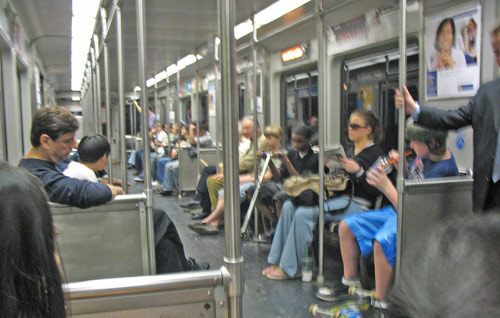2012/02/14
toward a synthetic universal instrument
The Roland line of “SuperNATURAL” digital pianos claims to produce a more natural sound by combining the two primary methods of synthesizing instruments, namely: acoustic modeling of real instruments, and recording samples from them. The two methods are different enough that, even if both converge to the true output as more sophistication is put to bear, they are rather difficult to merge together.
The history of synthesized instruments has ping-ponged between the two methods. First there was FM synthesis, which used analog function generation based on the simplest physical models of standing waves (harmonics, etc.). This allowed distinguishing between major instrument groups but sounded decidedly fake. Then people recorded acoustic instruments and looped/interpolated between samples — much better, but storage constraints placed limits on what could be processed; and there was never any dynamism. Then it was back to physical modeling, this time using waveguides to determine how various inputs like bowing on strings or blowing into pipes dynamically affect output sound (I think it started at CCRMA). This gave really good expressivity — but again sounded fake. And so back to wave-samples. For the last 15 years or so, especially with the cheapening of storage, it appears that the dumbest, brute-force method of using a large enough number of samples and ad-hoc adjustments to their decay and reverb characteristics became dominant. For ensemble instruments with little individual personality, it was actually superb. The trouble was always with instruments in solo.
(Read the article)
 MBTA has these “BIG RED” high-capacity cars now, but guess what?
MBTA has these “BIG RED” high-capacity cars now, but guess what?  (Why do “suit” and “purple” choose to stand?)
(Why do “suit” and “purple” choose to stand?)